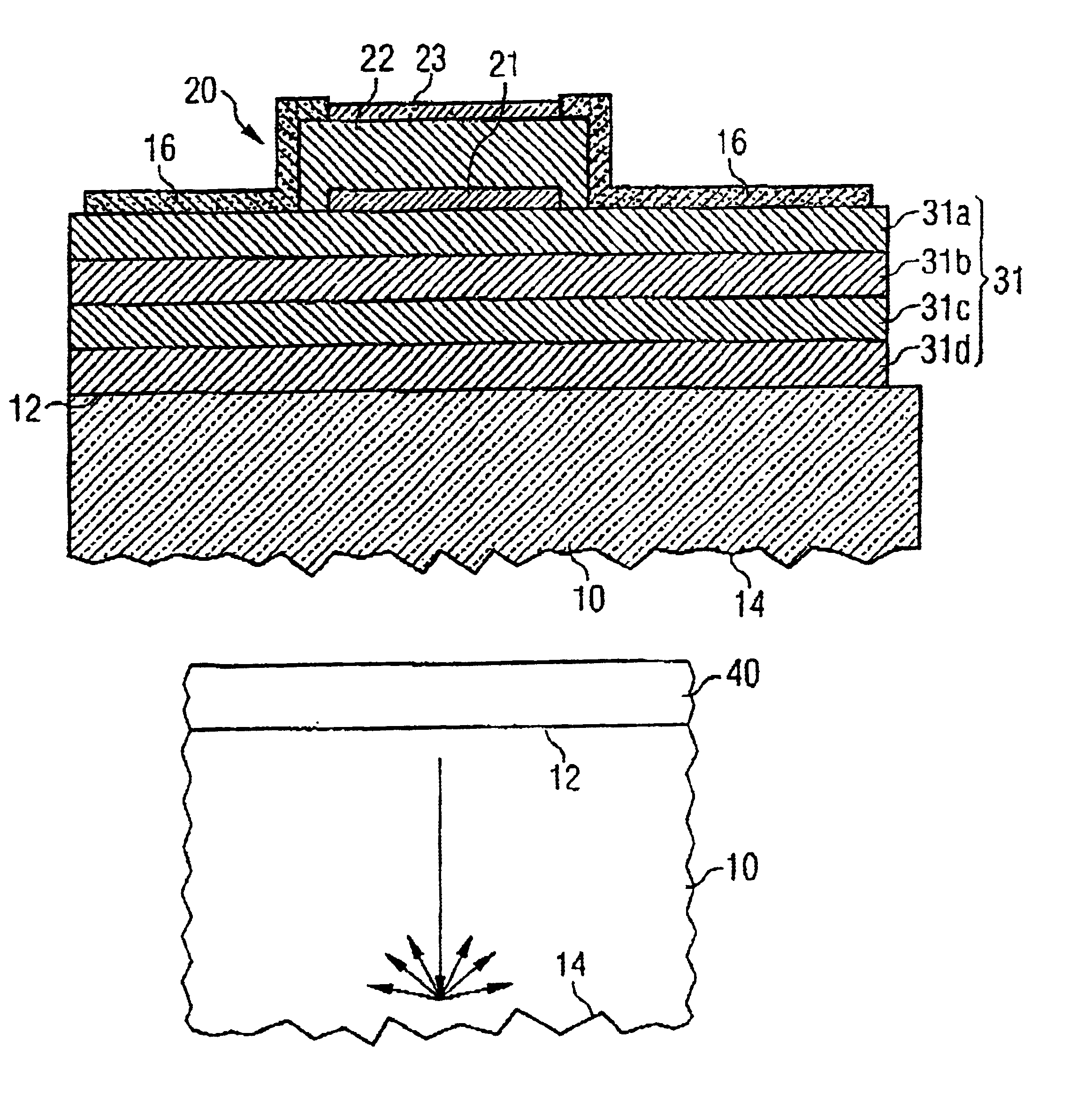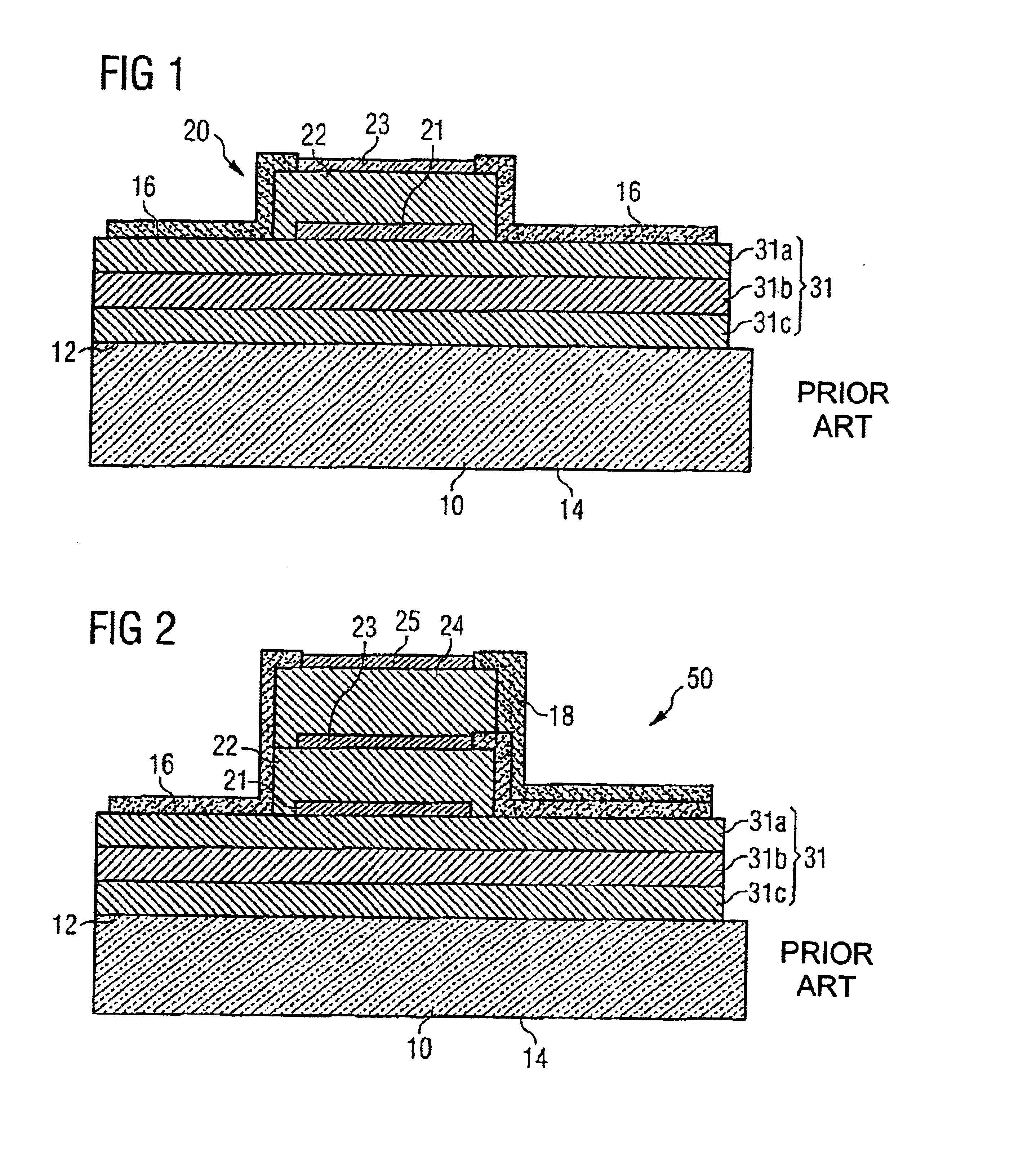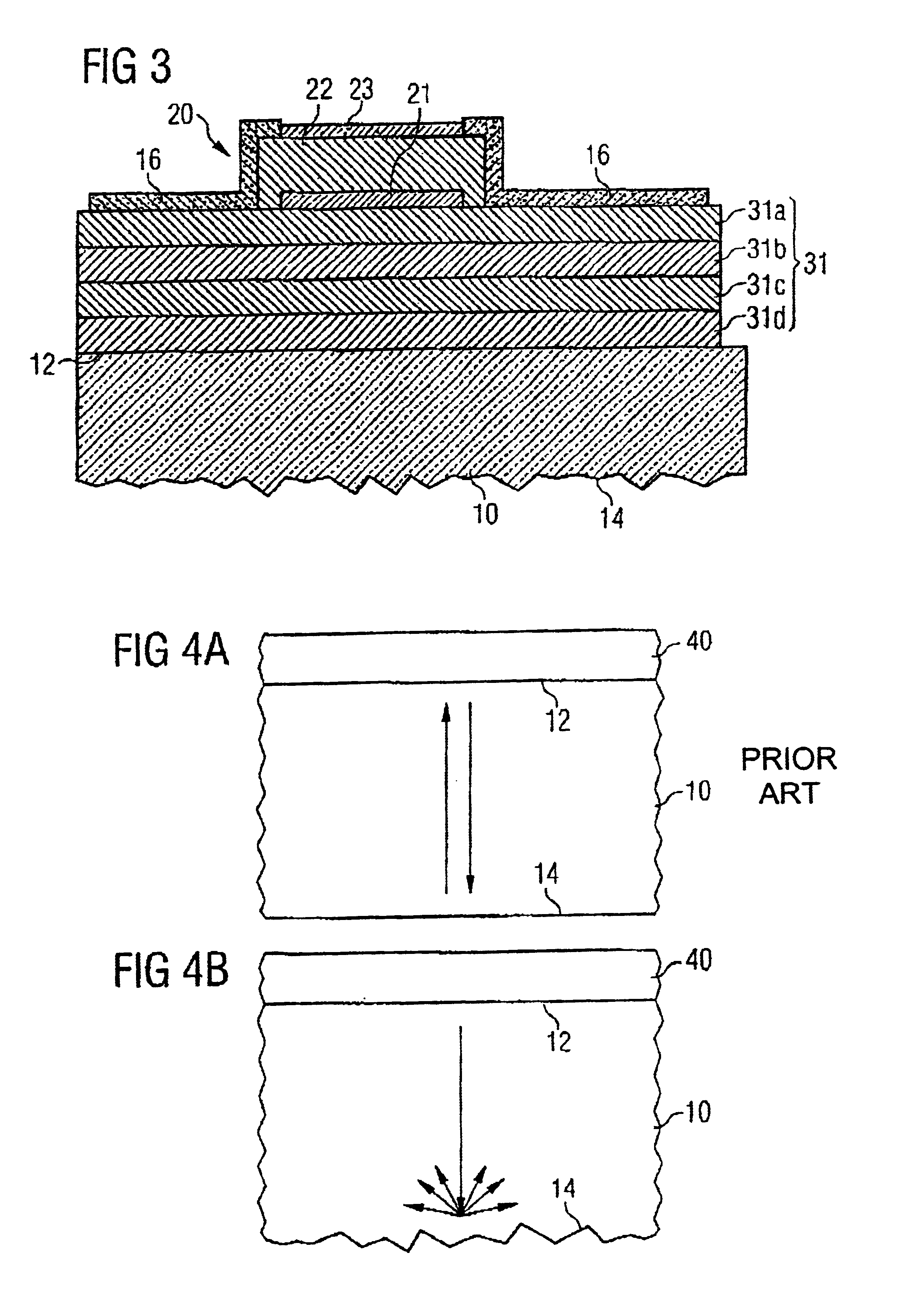Bulk acoustic wave filter with a roughened substrate bottom surface and method of fabricating same
a filter and substrate technology, applied in the direction of piezoelectric/electrostrictive transducers, generators/motors, transducers, etc., can solve the problems of deteriorating performance, leaking acoustic energy into the substrate, and incomplete acoustic isolation of the resonator by the acoustic mirror, so as to reduce the effect of acoustic energy reflection in the substra
- Summary
- Abstract
- Description
- Claims
- Application Information
AI Technical Summary
Benefits of technology
Problems solved by technology
Method used
Image
Examples
Embodiment Construction
[0052]FIG. 3 shows a resonator comprised in an acoustic wave filter used in a filter device according to a first embodiment of the present invention.
[0053]The resonator shown in FIG. 3 is a bulk acoustic wave resonator and essentially corresponds to the one described with respect to FIG. 1 of this application. Corresponding reference numerals in FIG. 3 denote parts corresponding to those of FIG. 1.
[0054]Contrary to the bulk acoustic resonator disclosed in FIG. 1 the resonator according to FIG. 3 comprises a substrate (10) in which the bottom surface of the substrate (14) has been roughened such that the reflection of an acoustic wave back to the acoustic wave filter is reduced. Thereby, the average height difference between the peaks and the valleys on the roughened bottom surface of the substrate is larger than 0.2λ, preferably larger than 0.5λ. In typical applications the average height difference between the peaks and the valleys is larger than 2 μm, preferably larger than 3 μm a...
PUM
| Property | Measurement | Unit |
|---|---|---|
| resonance frequency | aaaaa | aaaaa |
| height | aaaaa | aaaaa |
| height | aaaaa | aaaaa |
Abstract
Description
Claims
Application Information
 Login to View More
Login to View More - R&D
- Intellectual Property
- Life Sciences
- Materials
- Tech Scout
- Unparalleled Data Quality
- Higher Quality Content
- 60% Fewer Hallucinations
Browse by: Latest US Patents, China's latest patents, Technical Efficacy Thesaurus, Application Domain, Technology Topic, Popular Technical Reports.
© 2025 PatSnap. All rights reserved.Legal|Privacy policy|Modern Slavery Act Transparency Statement|Sitemap|About US| Contact US: help@patsnap.com



